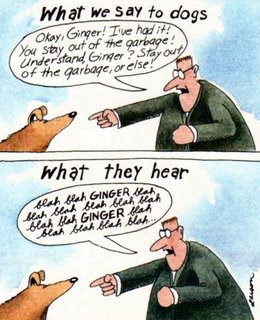 |
| "I've seen the future, brother - it is murder." (Source: teaparty.org) |
Not that this actually means anything, of course. While nobody outside the Nobel Society knows exactly how many submissions for the Peace Prize it receives every year, as this information is officially embargoed for a 50-year period, but one can safely assume that it runs into the thousands. And with many of the world's leading peace advocates from Malala Yousefzai to Bono still waiting for their kick at the can, it's safe to assume that you don't have the remotest shot at the big prize. (Unless of course Bono or Malala is reading this post, in which case I wish you all the best!)
Having said that, once your application is in the bag you are fully entitled to refer to yourself as a Nobel Peace Prize nominee. And while this is an essentially meaningless designation, this hasn't stopped some nominees from bandying about this designation. Moreover, in some benighted corners of our media landscape, namely the US Tea Party movement, being a Peace Prize nominee is considered an impressive credential - or at least deemed sufficient to fool the ignorant souls that constitute the movement's rank-and-file followers.
On January 22, the big-government-conspiracy-obsessed "news" portal Prison Planet run by barking-mad media wingnut Alex Jones produced a story with the title "Nobel Peace Prize Nominee: Obama Asks Military Leaders If They Will 'Fire On US Citizens'." Naturally, the Tea Party movement's official web portal latched onto this story like a falcon on a three-legged hamster and made it headline news. The story alleges that an unnamed individual described only as "one of America’s foremost military heroes" leaked this information to a "Nobel Peace Prize nominee." The Peace Prize candidate in question further elaborated on this exchange on his personal Facebook page with the following:
"I have just been informed by a former senior military leader that Obama is using a new "litmus test" in determining who will stay and who must go in his military leaders. The new litmus test of leadership in the military is if they will fire on US citizens or not. Those who will not are being removed."So who is this great advocate of peace, who the article further emphasizes is "a public figure, not an anonymous voice on the Internet"? The man in question is Guelph, Ontario native Dr. Jim Garrow. According to the Guelph Mercury, he's a former principal, school board trustee and special needs teacher who once created his own "Internet business" and ran a flight school. However, Garrow is best known for being the director of an organization known as Pink Pagoda, which works to rescue unwanted baby girls from China and put them up for adoption in North American homes. Dr. Garrow claims his organization has saved 34,000 baby girls since 2000.
 |
| On the other hand, he does look like a convincing Tolkien wizard. |
As for Garrow's much-vaunted "Peace Prize nominee" status, it turns out he was nominated for the prize in 2009 by an unnamed president of a Chinese university whose granddaughter was allegedly rescued by Pink Pagoda agents. He also goes by the honorific "Dr.," a designation he received as an honourary degree from the non-accredited North Carolina College of Theology, which apparently declined to respond to the newspaper's phone inquiries into Garrow's educational background. As for his teaching background, his record is checkered to say the least. His teaching licence in Athens, Ontario was suspended for a time following allegations of professional misconduct. His short-lived flight school was shut down after it was discovered the plane it was using was not insured or registered.
This, in a nutshell, is the great "public figure" used by the Tea Party to support its assertion that President Obama is priming members of the US army to fire on its own citizenry, presumably in an attempt to forcibly remove privately owned firearms from the "cold dead hands" of the American people. Of course there is no explanation as to how Garrow chanced to hear this remark from the unnamed "American hero" in question, or even why a Canadian leader of an international adoption agency based out of China (even a competant one) would be an authoritative source of information on a US president gone rogue. Of course the only information we're given about Garrow in the Prison Planet article picked up by the Tea Partiers is that he's a "Nobel Peace Prize nominee" and that he has saved children's lives, presumably in the hope that the reader will take this at face value and not explore it any further.
In the meantime, I am officially not soliciting nominations for the Nobel Peace Prize. Puh-lease! I want no part in an award that's been bestowed on war criminals like Henry Kissinger and Yasser Arafat. And had the likes of "Dr" Jim Garrow as nominees. Nope, not goin' there!















